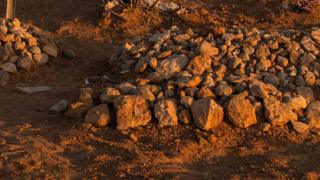Somalia drought: More than 100 die from hunger in one region
 Image copyright Getty Images
Image copyright Getty ImagesSomalia's Prime Minister, Hassan Ali Haire, says 110 people have died from hunger in a single region in the past 48 hours amid a severe drought.
The figure for the south-western Bay region is the first official death toll announced during the crisis. The full impact of the drought on the country is still unknown.
Humanitarian groups fear a full-blown famine will follow.
Currently, almost three million people in Somalia face food insecurity.
Local news outlet Alldhacdo reported dozens of deaths due to cholera in the town of Awdinle, also in the Bay region. The disease is often spread due to lack of clean drinking water.
- Why are there still famines?
- First famine declared since 2011
Somalia's President, Mohamed Abdullahi Farmajo, declared the drought a national disaster on Tuesday.
The drought in Somalia has been partly caused by the El Nino weather phenomenon which has affected east and southern Africa.
As well as the lack of food caused by the drought, there are many cases of dehydration.
Domestic animals are also dying in large numbers, and carcasses litter the landscape.
Nearly 260,000 people died during the famine that hit Somalia from 2010 to 2012.
Some 220,000 people died during another famine in 1992.
The nation is one of four identified by the United Nations as currently at risk of extreme hunger and famine - along with Nigeria, South Sudan and Yemen.
A formal famine has already been declared in the Unity state in South Sudan - the first official famine declared since Somalia in 2011.
The United Nations uses famine as a technical term, which only applies in very specific circumstances:
- When 20% of households cannot cope with food shortages
- Acute malnutrition exceeds 30%
- The death toll exceeds two people per day per 10,000 population


